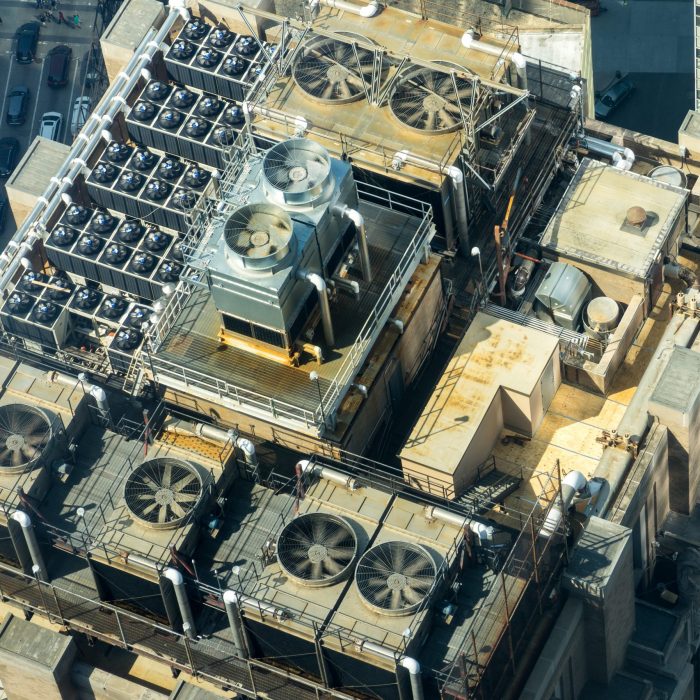Inside the HVAC Risk and COVID-19 Exposure in Restaurants, Office Buildings
COVID-19 is spread either by inhaling respiratory droplets or, more rarely, touching a contaminated surface and then your eyes, according to the World Health Organization (WHO) and the Centers for Disease Control and Prevention (CDC). However, aerosol transmission of the disease cannot be ruled out, says WHO, with the possibility that the virus can be transmitted through the heating, ventilation, and air-conditioning systems (HVAC). WHO guidelines state that airborne transmission of the coronavirus may be possible indoors, especially for people who spend extended periods in crowded, poorly ventilated rooms.
Check Out HVAC Systems, Make Modifications
Because of the concern over airborne transmission, businesses located in corporate offices, restaurants, retail stores, and other buildings should take precautionary measures to minimize the potential spread of the virus via their HVAC systems as they phase-in reopening. The optimum measure is to reconfigure HVAC systems to bring in more fresh air to reduce the amount of re-circulated air that potentially carries viral particles. In lieu of shutting down overnight or on weekends, for instance, run the HVAC system without interruption to increase the replacement of air and minimize airflow speeds.
Older systems might require more complex – and expensive – changes like replacing fixed-speed motors with variable-speed motors for greater control and a lower-speed airflow; introducing sophisticated airflow-control systems, such as those that are sensitive to pressure, to allow for smoother adjustment of airflows; and installing high-performance air-purification systems.
The CDC recommends that businesses with HVACs that have been shut down or put on setback during the pandemic lockdown review and follow the guidelines found here: ASHRAE Standard 180-2018, Standard Practice for the Inspection and Maintenance of Commercial Building HVAC Systems.
Low-tech strategies for preventing airborne viral transmission include: rearranging furniture to avoid having several people on the same airflow “corridor”; allowing natural ventilation by opening windows in buildings with basic HVAC systems, which cannot filter or pull in outside air, to increase the exchange of fresh air; and locking windows in buildings with central HVAC systems, when permissible, to reduce indoor temperature changes. Consider using portable high-efficiency particulate air (HEPA) fan/filtration systems to help enhance air cleaning. Also, ensure exhaust fans in restroom facilities are functional and operating at full capacity when the building is occupied.
Outdoor Dining at Restaurants
Several states are only allowing outdoor dining at restaurants due to air circulation concerns and the close proximity of patrons even with reduced seating. California, for example, which initially allowed indoor dining with restrictions in place reversed its guidelines to only permit outdoor dining after a surge in coronavirus cases. According to the state’s latest directives, “an outdoor dining facility must allow for the free flow of outdoor air through the entire space. To meet this requirement, the seating area must have at least three sides open, with no more than four-foot-high walls that do not impede the free flow of air through the space. Umbrellas, canopies, awnings, and other shade structures are allowed only if they do not have sides.”
In addition, the CDC concluded that an asymptomatic patient in China transmitted the virus to families at two nearby tables in a restaurant, according to a report by McKinsey. “Based on the restaurant layout, seating arrangements, and smear samples from air-conditioning inlets and outlets,” the report indicated that “the CDC found that the coronavirus was likely transmitted when strong airflows from a nearby air conditioner spread large droplets from the infected person. These droplets traveled more than one meter—further than usual, but less than the distance aerosols can typically travel.”
While the HVAC systems in the transmission and mitigation of COVID-19 in buildings are yet to be fully tested and confirmed, proper design, installation, and maintenance of these HVAC systems are key to maintaining healthier indoor air quality and more efficient built environments.








